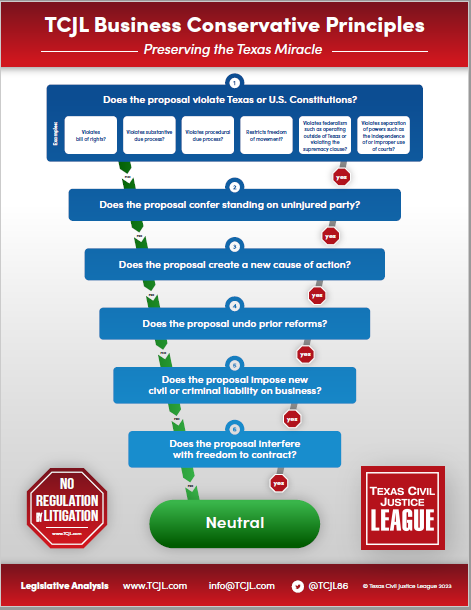 In a case with significant ramifications for the oil and gas industry, a split El Paso Court of Appeals has held that a mineral lessee does not have standing to sue a pipeline company for preventing it from accessing its oil and gas due to an underground hydrogen-sulfide disposal site located above the formation it seeks to drill.
In a case with significant ramifications for the oil and gas industry, a split El Paso Court of Appeals has held that a mineral lessee does not have standing to sue a pipeline company for preventing it from accessing its oil and gas due to an underground hydrogen-sulfide disposal site located above the formation it seeks to drill.
ETC Pipeline, Ltd. and LG PL, LLC v. Ageron Energy LLC (No. 08-23-00010-CV; issued December 29, 2003) has a long prehistory that is the subject of a Texas Supreme Court decision in Regency Field Services, LLC v. Swift Energy Operating, LLC, 622 S.W.3d 807 (Tex. 2021). Regency, which merged with ETC in 2015, obtained a Railroad Commission permit to operate an H2S disposal well on the Dickinson Ranch in McMullen County. The disposal well is located 5,800 under the surface in the Wilcox formation, a depleted mineral field. Beneath the Wilcox lie the Olmos and Eagle-Ford formations. In 2012 the RRC issued an amended permit allowing Regency to increase the injection volume. A few months later, however, H2S showed up in an oil and gas well on a neighboring ranch owned by the Quintanillas. The well suffered damage and had to be plugged. Two months after that, H2S appeared in an inactive well on the Dickinson Ranch and, subsequently, some H2S escaped to the surface and killed some of Dickinson’s cattle.
The lawsuits began in 2014, when the Quintanillas sued Regency for H2S-related damages to both the surface and mineral estates. The Dickinson family members intervened (while the surface interest in the ranch was partitioned, the mineral estate was not). After ETC took over the disposal well following the merger, Swift Energy intervened in the Quintanilla action. Regency settled with the Quintanillas and Dickinsons in 2017 and sought summary judgment against Swift based on limitations, which granted the motion. SCOTX eventually reversed the summary judgment and on remand a jury awarded Swift $42 million in damages.
Action Energy came on the scene in 2018 and 2019, when it acquired several leases in the area, included on the Dickinson Ranch. Action assigned its leases to Ageron in early 2020. Ageron got a permit to drill a well 800 feet from ETC’s disposal well. ETC informed Ageron of the proximity of the disposal well and the necessity to take appropriate precautions against H2S contamination. Ageron began drilling in February 2022 but didn’t get very far before it ran into the hydrogen sulfide, which wrecked broke its drill pipe. Ageron plugged the well, and because that was the only well it drilled, its leases soon expired. Ageron sued ETC in June 2022, asserting negligence, trespass, and nuisance. ETC moved for summary judgment based on lack of standing and asserted a TCPA motion to dismiss. The trial court denied both motions. ETC appealed.
In an opinion by Justice Soto, joined by former 4th Court Chief Justice Marion, the court of appeals reversed. ETC argued that Ageron had no standing to assert injuries to the land because the Dickinsons owned the land when the injury accrued and did not expressly assign their right to sue to Ageron. The court’s analysis commenced with a discussion of when Ageron’s claims accrued. This involved determining accrual dates for each of the three theories alleged, but the upshot is that the injury occurred when the conduct “first” caused a legal injury for which relief may be obtained or, for trespass to a mineral lessee’s rights, when “unauthorized conduct first invades or interferes with the claimant’s legal rights ‘to explore, obtain, produce, and possess the minerals subject to the lease.” As to trespass to the surface owner’s rights, a claim accrues “when the unauthorized entry occurs, even if the entry does not cause a discernable injury or damages” (citing Swift).
It’s important to note that SCOTX has applied the “legal-injury” and “single-action” rules to injury-to-land claims. Under the “legal-injury” rule, a party’s claims accrue even if the claimant does not yet know of an injury (or the full extent of it), the cause of the injury, or who caused it. It also accrues regardless of whether the claimant later suffers additional injuries or has not suffered or cannot ascertain any or all of the resulting damages (again citing Swift). Under the “single-action” rule, “wrongful conduct gives rise to a single, indivisible action in which a claimant must pursue all claims for all damages from all resulting injuries, and those claims all accrue when the first such injury occurs” (Swift). When property is jointly owned, all property owners must be parties to the suit and multiple actions for a single trespass cannot be pursued (citing Taylor v. Catalon, 166 S.W.2d 102, 105 (Tex. 1942)). And while accrual may be delayed under discovery and fraudulent concealment rules, those “rules apply only to the party who owned the land when the injury occurred, not to subsequent owners or lessees” (citations omitted).
There was no dispute that the Dickinsons had not assigned their claims to Ageron, so the issue became when the first injury to Ageron’s mineral interests occurred. Ageron argued that the injury could not have “first” occurred until Ageron actually drilled a well in January 2020. ETC countered that the first injury from migrating H2S dated back to 2012, when the poison appeared in nearby wells and killed Dickinson’s cattle. After distinguishing a few precedents offered by Ageron, the court agreed with ETC. There was no question that Dickinson’s claim for the death of his cows accrued when the cows were exposed and died, if not a month before when H2S was detected in the abandoned well on the property.
But there is a twist. Ageron argued that no injury to the subsurface interest occurred in 2012 because “no ongoing drilling operation was infringed on or interfered with.” ETC countered that it doesn’t matter because “mere presence of H2S in a subsurface space does infringe on a surface owner’s possessory interest—here, Jeffrey Dickinson’s interest, with negative implications for Ageron’s claims.” In Regency, SCOTX declined to rule on “whether subsurface migration can cause an actionable trespass to a surface owner’s possessory interest in the subsurface space” (citation omitted). Ageron now requested the court of appeals to go where SCOTX has not yet gone. The majority demurred, preferring to stick with settled law providing that the death of Dickinson’s cows triggered “all claims for all damages resulting from all injuries that arise from the wrongful conduct, and those claims all accrue when the first such injury occurs” (citing Swift). No matter that the mineral interest claims might not have been ripe at the time. The single-action rule demands that all possible claims be asserted in one lawsuit. Ageron never had a lawsuit to begin with and has no standing to bring one now.
Justice Palafox dissented. Applying the theory of “trespass on the case,” which “provides for an action for injury to a non-possessory interest when more than trespass is shown” (i.e., actual injury), she would hold that Ageron had standing to bring an action for trespass to its right to develop its minerals. She also believes that SCOTX recognized this theory of trespass in Regency and other cases. She further asserted that the majority violated its own precedent, which she argues stands for the proposition that a cause of action for interference is not ripe until the mineral lessee actually attempts to develop the minerals (citations omitted). As to Dickinson’s claim for injury to his cattle, that only had to do with the surface estate.
This case will undoubtedly proceed to the petition for review stage. By the way, this is not an academic question. Ageron is trying to recover nearly $200 million in damages for drilling a well in an area in which they knew had a potentially big problem when they acquired the mineral interests in the first place. We also think the dissent is off base in its ready dismissal of the importance of the “single-action” rule to oil and gas development more generally. Whereas Justice Palafox thinks the majority opinion “will undesirably chill mineral development as operators will be hesitant to explore in subsurface areas where a migration of H2S has been earlier noted either by geological data alone, or by ill effects suffered by livestock on the property,” it seems equally undesirable to recognize what we see as a new cause of action that rewards a lessee for drilling smack dab in the middle of an H2S plume that everybody knows exists in that very spot. Indeed, according to Justice Palafox’s own logic, the dissenting opinion will chill the drilling of crucially important H2S disposal wells, without which the industry can hardly function at all. All that said, this is really a public policy and regulatory matter that should be handled in the legislature and at the RRC, not in the courtroom.








